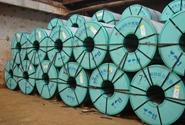Steel Products Prices North America

Other Metallic Coated Import Analysis 2009-YTD
Written by John Packard
April 26, 2017
Galvalume imports through the first three months 2017 total 292,843 net tons. If this pace continues throughout the calendar year imports of “other metallic” products (with the majority being Galvalume) could exceed 1.1 million tons despite the antidumping and countervailing duty suits.
As you can see by the table below, there has been steady growth in the number of AZ tons being exported to the United States. Since 2013 imports have been at one million net tons a year. The affirmative AD/CVD results in 2016 from the 2015 filing (CORE) has had no impact on tonnage.
The one country that is out of the mix is China and the new kid on the block is Vietnam. Brazil returned to the U.S. market in 2015.
The real story with Galvalume is the fact that the market is not that large so 1 million tons of imports make up around 50 percent of the total market.
At the same time, Steel Dynamics has invested a large sum of money on new Galvalume coating facilities at both the Indiana and Mississippi operations.

John Packard
Read more from John PackardLatest in Steel Products Prices North America

Nucor slows HRC price climb with $5/ton increase
After eight weeks of double-digit price increases on hot-rolled (HR) coil, Nucor slowed the price rise this week with an increase of $5 per short ton.

Domestic CRC prices surge ahead of imports
The price spread between stateside-produced CR and imports reached its widest margin in over a year.

Evraz raises plate prices $160/ton
Evraz North America (NA) has followed Nucor and SSAB with a plate price increase of its own: up $160 per short ton (st). The increase was effective immediately for all new orders of carbon, high-strength low-alloy, and normalized and quenched-and-tempered plate products, as well as for hot-rolled coil, the steelmaker said in a letter to […]

Nucor lifts HR coil to $820/ton
Nucor has increased its consumer spot price (CSP) for hot-rolled (HR) coil for a fourth consecutive week.

Nucor pushes HR spot price to $790/ton
Nucor increased its consumer spot price (CSP) for hot-rolled (HR) coil to $790 per short ton (st) on Monday, Feb. 10 – a $15/st bump vs. last week. The Charlotte, N.C.-based company has raised its weekly CSP by $40/st over the past three weeks after maintaining tags at $750/st since Nov. 12, according to SMU’s […]


